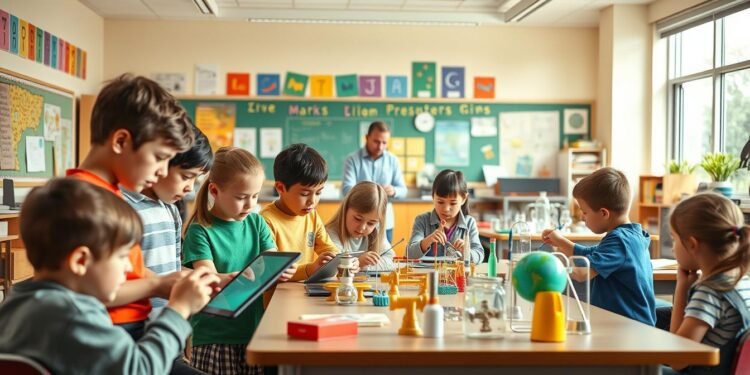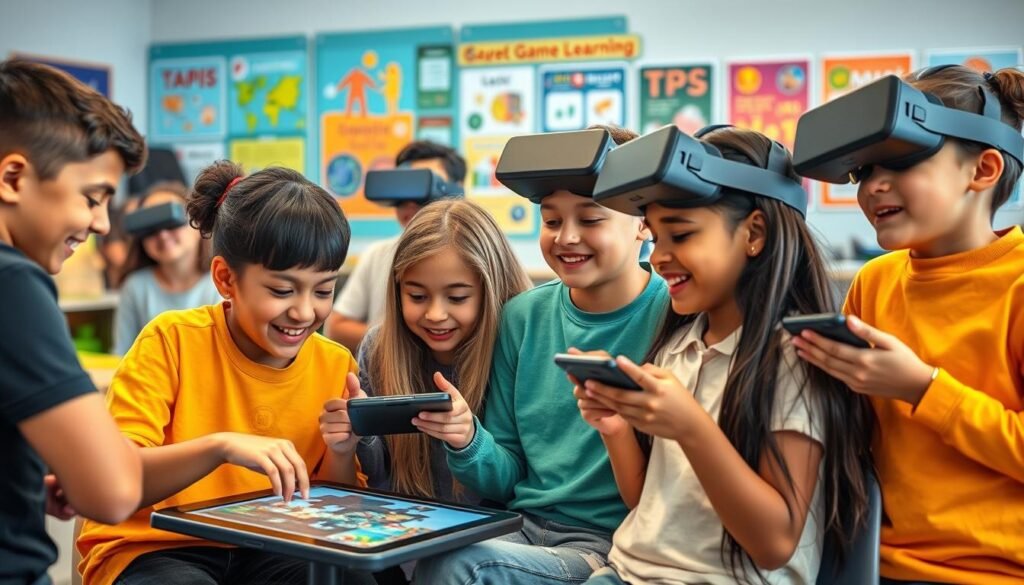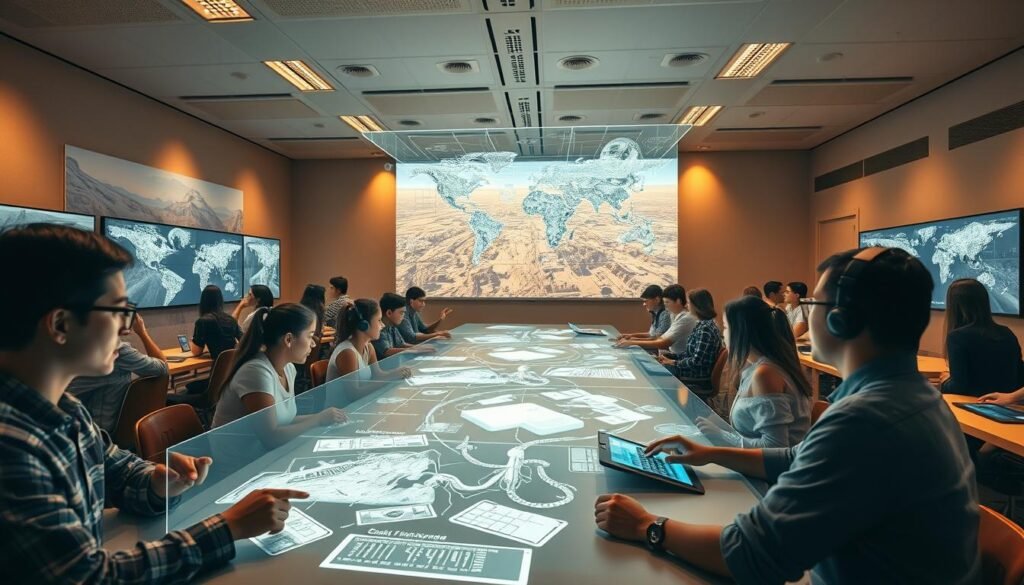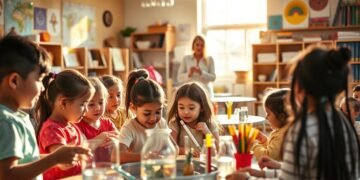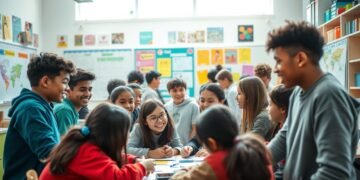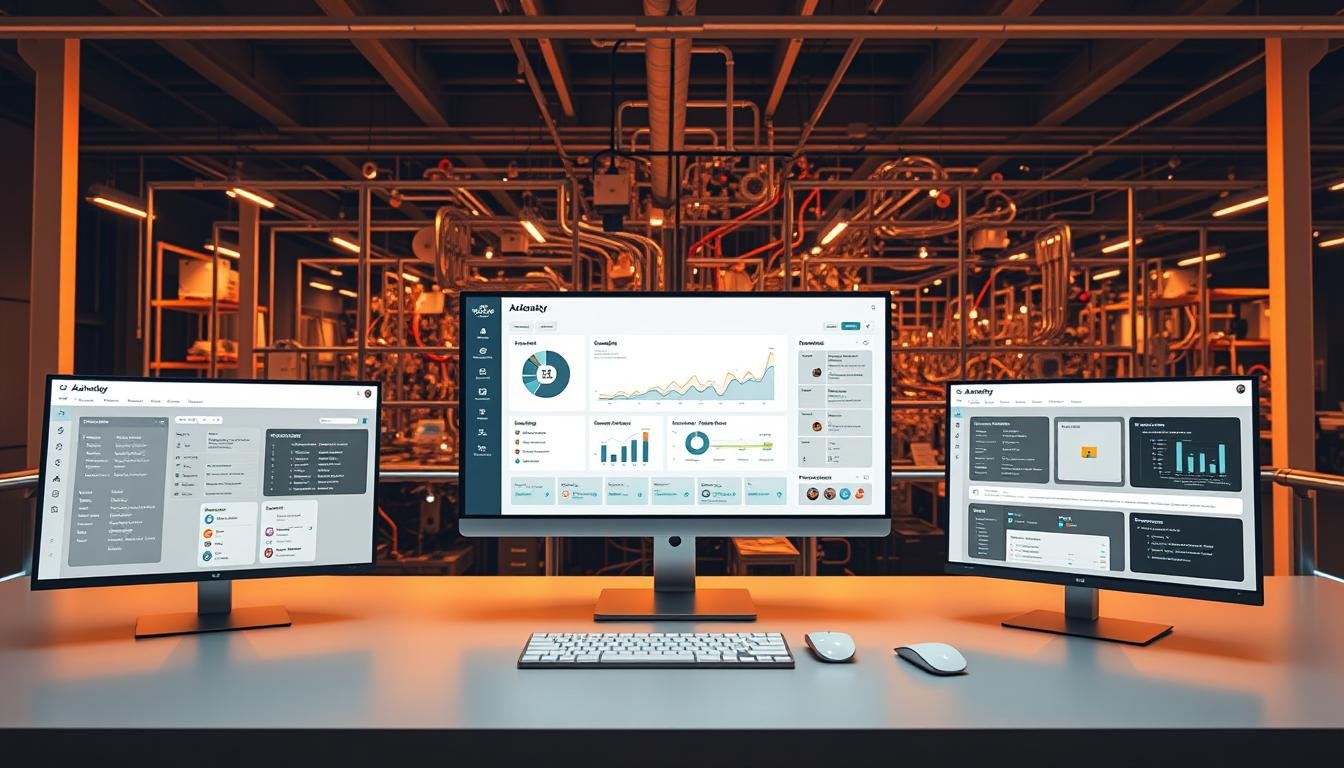Have you ever wondered why some students excel while others struggle, even in the same classroom? The answer might lie in how they engage with the material. Traditional teaching often leaves students as passive listeners, but modern education is shifting toward active participation to drive better results.
Studies show that 91% of school-age children are familiar with video games, making gamification a natural fit for boosting engagement. This approach, along with tools like flipped classrooms and peer collaboration, helps students take control of their education. Carnegie Mellon research confirms that active participation significantly improves long-term knowledge retention.
By integrating technology and personalized strategies, educators can create a dynamic classroom environment. These methods not only enhance critical thinking but also prepare students for real-world challenges. Companies like Hurix Digital are leading the way by providing innovative solutions for content creation.
Ready to explore how these techniques can transform education? Let’s dive into the six core methods that are reshaping the way students learn and succeed.
Key Takeaways
- Modern education focuses on active participation for better results.
- Gamification leverages students’ familiarity with video games.
- Active learning improves long-term knowledge retention.
- Technology integration creates dynamic classroom experiences.
- Personalized strategies enhance critical thinking skills.
- Real-world preparation is a key benefit of interactive methods.
1. Flipped Classroom Model: Revolutionizing Traditional Teaching
The flipped classroom model is transforming how students engage with lessons. Instead of traditional lectures, this approach flips the script. Students review pre-recorded content at home and use classroom time for hands-on activities. This shift allows for deeper understanding and collaboration.
What is the Flipped Classroom Model?
In a flipped classroom, the usual homework and lecture structure is inverted. Teachers provide video lessons or reading materials for students to study before class. This self-paced approach gives students more control over their learning. Classroom time is then dedicated to discussions, problem-solving, and group work.
Benefits of the Flipped Classroom Approach
This model offers several advantages. First, it increases student engagement. Studies show that 72% of teachers report higher participation with this method. Second, it allows for flexible learning. Students can revisit lessons as needed, leading to better comprehension. Finally, it improves assignment completion rates by 68%, as students have more time to apply what they’ve learned.
How to Implement the Flipped Classroom Model
To get started, curate high-quality video content from platforms like TED-Ed or Khan Academy. Design case studies and problem-solving activities for in-class work. Use Learning Management Systems (LMS) to track progress and gather feedback. For schools with limited tech access, consider hybrid strategies that combine online and offline resources.
2. Gamification in Education: Making Learning Fun and Engaging
What if education could feel as exciting as playing a game? Gamification is transforming classrooms by blending the thrill of games with the rigor of academic content. This approach taps into students’ natural interest in challenges and rewards, making lessons more engaging and effective.
The Role of Gamification in Modern Education
Gamification uses game mechanics like points, leaderboards, and badges to motivate students. For example, Duolingo’s language app has shown a 34% higher retention rate compared to traditional methods. Similarly, Minecraft Education Edition is used in 115 countries to teach STEM concepts. These tools turn passive learning into active participation.
Examples of Gamification in the Classroom
Classcraft is a popular classroom management system that uses team quests to encourage collaboration. Kahoot! uses real-time quizzes to boost participation by 40%. Prodigy Math Game has helped middle school students raise their test scores by 22%. These examples show how gamification can create meaningful experiences for students.
How Gamification Enhances Student Engagement
Gamification works by triggering dopamine-driven motivation loops. When students earn rewards for completing tasks, they feel a sense of accomplishment. This keeps them engaged and eager to tackle new challenges. To implement gamification, align rewards with curriculum milestones and ensure a balance between competition and collaboration.
By integrating gamification, educators can create a dynamic classroom environment that fosters both engagement and academic success. This approach not only makes lessons more enjoyable but also prepares students for real-world problem-solving.
3. Personalized Learning Pathways: Tailoring Education to Individual Needs
Every student has unique strengths and challenges, but traditional education often treats them the same. Personalized learning pathways address this by tailoring content and pacing to individual needs. This approach ensures that no student is left behind or held back by a one-size-fits-all system.
Understanding Personalized Learning
Personalized learning begins with diagnostic pre-assessments. These tools create baseline knowledge maps, helping educators understand each student’s starting point. Platforms like DreamBox Learning use adaptive algorithms to adjust content difficulty dynamically, ensuring 60% faster concept mastery.
Technology’s Role in Personalized Learning
AI-driven platforms like Century Tech are revolutionizing education. They analyze student performance in real-time, offering tailored solutions to address gaps. Newsela provides differentiated reading levels for current events, making complex topics accessible to all learners. Wearable tech like Fitbit EDU even tracks engagement patterns to optimize experiences.
Benefits of Customized Learning Experiences
Personalized learning reduces achievement gaps by 78% in districts using AI tutors. It also cuts special education referrals by 45%, as tailored plans address specific challenges. For teachers, training in these tools is essential to implement them effectively. Privacy concerns must also be addressed to ensure data-driven personalization remains ethical.
By focusing on individual needs, personalized learning pathways empower students to take control of their education. This approach not only enhances skills but also fosters a deeper understanding of the material, preparing students for future development.
4. Education Technology and Integration: Enhancing Classroom Dynamics
Technology is reshaping the way students and teachers interact in the classroom. From interactive whiteboards to virtual reality, these tools are transforming traditional teaching methods. By integrating technology, educators can create dynamic and engaging learning environments that cater to diverse student needs.
Key Technologies Transforming Education
Google Classroom is a prime example, used by over 150 million students globally. It streamlines assignment management and fosters collaboration. Another game-changer is AR/VR, with the market projected to reach $12.6 billion by 2028. Tools like Nearpod’s VR field trips bring geography lessons to life, making abstract concepts tangible.
Interactive whiteboards, such as those from Smart Technologies and Promethean, are also revolutionizing classrooms. These solutions enable real-time collaboration and multimedia presentations. Learning Management Systems (LMS) like Canvas further enhance efficiency by centralizing resources and tracking progress.
How to Integrate Technology into Teaching
Successful integration starts with professional development days and tech mentors. A phased implementation ensures teachers and students adapt smoothly. For example, schools can begin with basic tools like Google Classroom before introducing advanced solutions like AR/VR.
Balancing screen time is crucial. A 30/70 ratio of online to offline activities prevents tech overload. Microsoft Immersive Reader is a standout tool, helping dyslexic students access content more easily. These strategies ensure technology enhances, rather than hinders, the learning process.
The Impact of Technology on Student Learning
Studies show that interactive displays offer a 3:1 return on investment, boosting engagement and comprehension. LMS platforms streamline workflows, allowing teachers to focus on personalized instruction. Tools like Nearpod and Prodigy Math Game have been shown to improve test scores by up to 22%.
By leveraging technology, educators can address individual learning gaps and prepare students for future challenges. The result is a more inclusive and effective classroom experience that empowers both teachers and students.
5. Peer Teaching and Collaboration: Fostering Teamwork and Leadership
Collaboration among students can unlock new levels of understanding and growth. When peers work together, they share knowledge, build leadership skills, and tackle challenges more effectively. This approach not only enhances academic performance but also prepares students for real-world teamwork.
The Benefits of Peer Teaching
Peer instruction increases concept retention by 28%, according to a Harvard study. This method allows students to explain ideas in their own words, reinforcing their understanding. Cross-age tutoring programs, for example, have boosted K-12 reading scores significantly. These activities create a supportive environment where everyone benefits.
Strategies for Effective Peer Collaboration
One effective strategy is the “Teach Back” methodology, widely used in medical training. In this approach, students teach concepts to their peers, ensuring mastery. Think-pair-share variations work well for different class sizes, encouraging participation. Slack-based study groups are also gaining popularity in hybrid courses, fostering continuous collaboration.
How Peer Teaching Enhances Learning Outcomes
Peer teaching develops leadership skills and improves problem-solving abilities. The Jigsaw method, for instance, reduces racial achievement gaps by 19%. Group projects teach conflict resolution and effective communication. Rubrics for peer evaluation ensure fairness and accountability, making work more productive.
By fostering teamwork and leadership, peer teaching creates a dynamic classroom experience. It empowers students to take ownership of their learning and prepares them for future challenges.
6. Real-World Simulations: Bridging Theory and Practice
Imagine stepping into a classroom where every lesson feels like real life. Real-world simulations are transforming education by allowing students to practice their skills in lifelike scenarios. These immersive experiences bridge the gap between theory and practice, preparing learners for the challenges they’ll face today and in the future.
What Are Real-World Simulations?
Real-world simulations are interactive scenarios that mimic real-life situations. They allow students to apply their knowledge in a safe, controlled environment. For example, healthcare simulations reduce medical errors by 33%, while virtual stock market games improve financial literacy by 41%. These tools provide hands-on learning that traditional methods often lack.
Examples of Simulations in Education
Labster’s virtual labs replace expensive chemistry equipment, making science education more accessible. Mursion’s AI avatars help teachers practice classroom interactions. Business simulation tools like Marketplace Live teach entrepreneurial skills through realistic scenarios. Disaster response drills and AR maintenance simulations further enhance practical understanding.
How Simulations Prepare Students for Real-Life Challenges
Simulations prepare students by offering real-world application of their knowledge. They improve problem-solving skills and build confidence in handling complex situations. For example, virtual internships provide cost-effective alternatives to traditional programs. While VR implementations face challenges like motion sickness, the benefits far outweigh the drawbacks.
Conclusion: Embracing Interactive Learning for Academic Excellence
Modern education strategies are transforming how students engage with their studies. With a 63% average increase in engagement, these approaches are proving their value. Tools like flipped classrooms and gamification layers create dynamic environments that cater to diverse needs.
Implementing these solutions requires a thoughtful roadmap. Start with flipped content, then gradually introduce gamification to avoid innovation fatigue. Companies like Hurix Digital are leading the way, offering scalable tools for seamless integration.
Looking ahead, AI-driven personalization will shape classrooms by 2025. Schools adopting four or more methods report an 89% college readiness rate, highlighting their effectiveness. These strategies prepare students for real-world challenges while fostering essential skills.
Ready to transform your classroom? Schedule a demo with experts to explore these innovative solutions today.
FAQ
What is the Flipped Classroom Model?
The Flipped Classroom Model reverses traditional teaching by having students review materials at home and engage in hands-on activities during class. This approach allows for more active participation and deeper understanding.
How does gamification enhance student engagement?
Gamification uses game-like elements such as points, badges, and challenges to make lessons more exciting. It motivates students to participate actively and fosters a sense of achievement, boosting their interest in the subject.
What are the benefits of personalized learning pathways?
Personalized learning tailors education to individual needs, allowing students to progress at their own pace. This method improves comprehension, builds confidence, and helps address specific challenges each student may face.
What technologies are transforming education today?
Tools like interactive whiteboards, learning management systems, and educational apps are reshaping classrooms. These technologies make lessons more dynamic, accessible, and aligned with modern teaching goals.
How does peer teaching improve learning outcomes?
Peer teaching encourages collaboration and leadership. Students explain concepts to each other, reinforcing their own understanding while developing communication and teamwork skills.
What are real-world simulations in education?
Real-world simulations recreate practical scenarios, allowing students to apply theoretical knowledge. These activities prepare them for real-life challenges by fostering critical thinking and problem-solving skills.
How can teachers integrate technology effectively into their lessons?
Teachers can use tools like online quizzes, virtual labs, and collaborative platforms to enhance lessons. Training and planning are key to ensuring technology supports learning objectives without overwhelming students.
What strategies promote effective peer collaboration?
Clear roles, structured tasks, and open communication are essential for successful peer collaboration. Teachers should provide guidance and create an environment where teamwork thrives.



